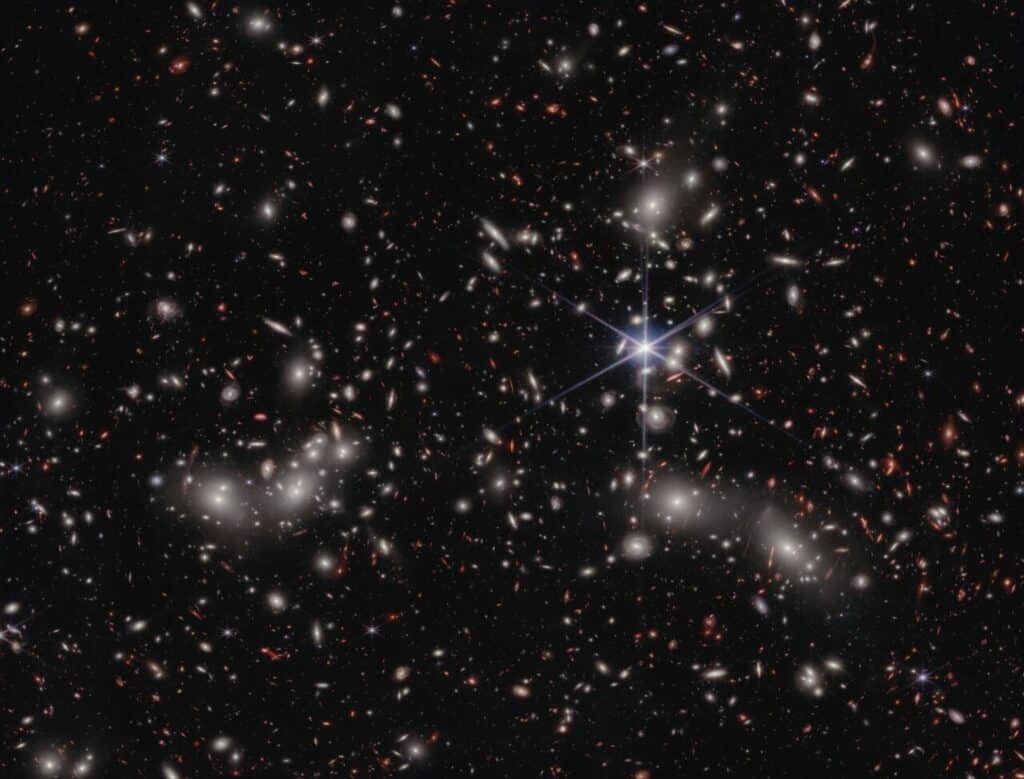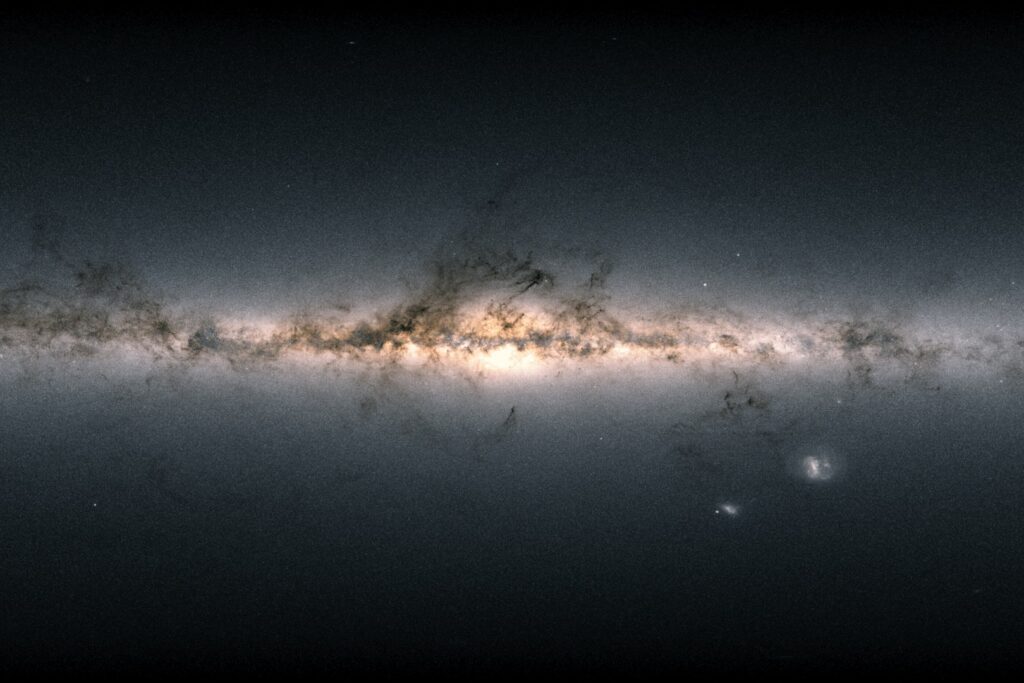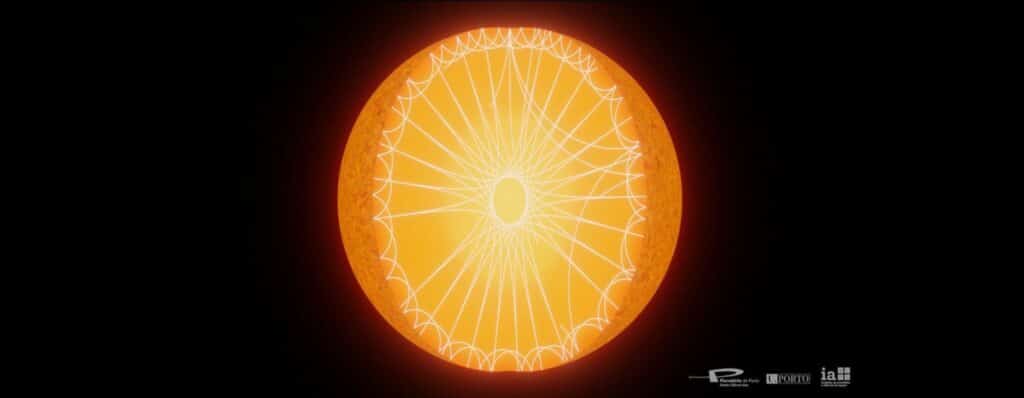Earthquakes can happen on stars? Scientists have detected the tiniest “starquakes” ever recorded on an orange dwarf star. Deep within stars’ cores, nuclear fusion reactions churn away, generating the energy that makes them shine. Closer to the surface, bubbles of hot gas rise, cool, and sink in a process called convection, like boiling water in a pot. This tumultuous dance of gas sets the outer layers of stars vibrating with sound waves in a phenomena known as “stellar oscillations.”
For the Sun and other stars like it, these oscillations are caused by convection and are thus called “solar-like oscillations.” Astronomers can detect the signature of these oscillations in the subtle changes they induce in a star’s brightness or in the wobble of its surface as it expands and contracts. This field of study is known as asteroseismology — quite literally, the study of “starquakes.”

Over the past couple decades, space telescopes like CoRoT, Kepler, and TESS have revolutionized asteroseismology by providing exquisitely precise measurements of stellar brightness variations. However, these missions have struggled to detect oscillations in the coolest stars — those with surface temperatures below about 5,000 Kelvin (8,540 degrees Fahrenheit), corresponding to K-type stars and cooler.
Now, a team of international astronomers have achieved a breakthrough in a study published in the journal Astronomy and Astrophysics Supplement Series. Using the ultra-precise ESPRESSO spectrograph on the European Southern Observatory’s Very Large Telescope in Chile, they have unambiguously detected solar-like oscillations in the K-type dwarf star Epsilon Indi. With a surface temperature of just 4,600 K (7,820 degrees Fahrenheit), this is the coolest star in which such oscillations have ever been seen.
Unlike space telescopes which measure oscillations via changes in brightness, ESPRESSO detects them via the Doppler shift — the wobble of the star’s surface towards and away from us as it pulsates. The advantage of this technique is that the signal of oscillations is clearer compared to the noise from the star’s surface granulation and activity. However, it requires long stretches of precise measurements with a powerful spectrograph.
“The extreme precision level of these observations is an outstanding technological achievement,” says study lead author Dr. Tiago Campante, of the Institute of Astrophysics and Space Sciences at the University of Porto, in a media release. “Importantly, this detection conclusively shows that precise asteroseismology is possible down to cool dwarfs with surface temperatures as low as 4,200 degrees Celsius, about 1,000 degrees cooler than the Sun’s surface, effectively opening up a new domain in observational astrophysics.”
Over six nights, the astronomers collected over 2,000 spectra of Epsilon Indi, measuring its velocity to a precision of just 30 centimeters per second — slower than a person walking! In these data, the unmistakable signature of solar-like oscillations could be seen, with typical periods around three minutes. The amplitude of these oscillations is just 14 percent that of the Sun’s oscillations, highlighting the difficulty of detecting them.
The oscillation amplitude in Epsilon Indi is even less than predicted from its luminosity and mass. This suggests that the efficiency of convection in exciting oscillations may decline in cooler K-type stars. The detection of oscillations in Epsilon Indi thus not only demonstrates the feasibility of studying these stars with asteroseismology, but also provides new insights into the subtle interplay between pulsations and convection.
The successful detection paves the way for asteroseismology of even cooler and smaller stars with upcoming facilities like ESO’s Extremely Large Telescope. This is exciting because small, cool stars are favored targets in the search for Earth-like planets and potential signs of life. Understanding their internal structures and evolution through asteroseismology will be key to accurately characterizing any planets found around them.
Moreover, K-type stars are abundant in the Milky Way and very long-lived, making them useful probes of the galaxy’s chemical history. Asteroseismology can provide precise ages for these stars, helping to reconstruct the timeline of the galaxy’s evolution.

“The mismatch between the predicted and observed sizes of these stars has implications for finding planets around them,” explains team member Bill Chaplin, professor and head of the School of Physics & Astronomy at the University of Birmingham. “If we use the most successful planet-finding technique — the so-called transit method — we get the size of the planet relative to the size of the star; if we don’t size-up the star correctly, the same will be true of any small planet we have found.”
In the coming years, as telescopes get larger and spectrographs get more precise, asteroseismology is poised to open a new window into the unseen depths and pulsing hearts of the coolest stars in our galaxy. The discovery of oscillations in Epsilon Indi marks an exciting leap towards that future.












